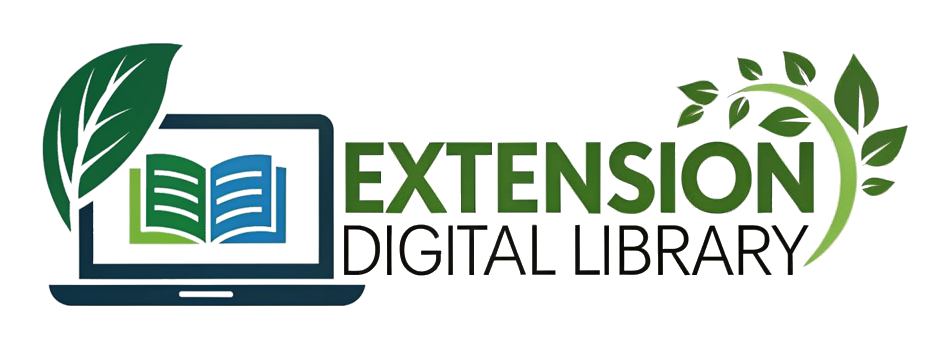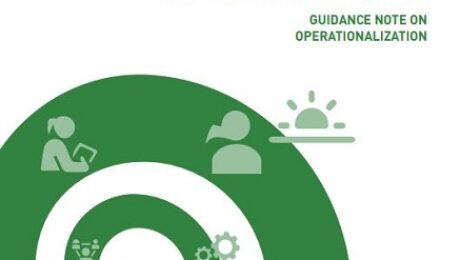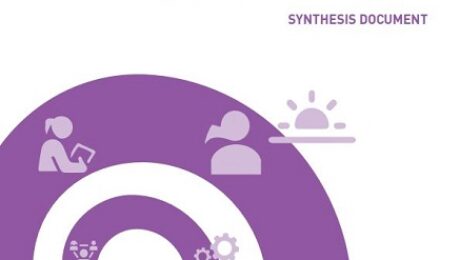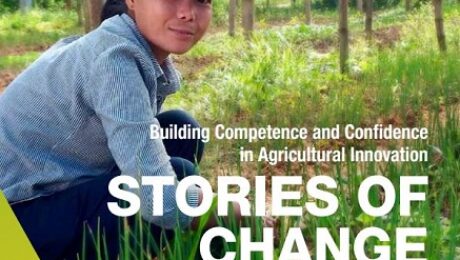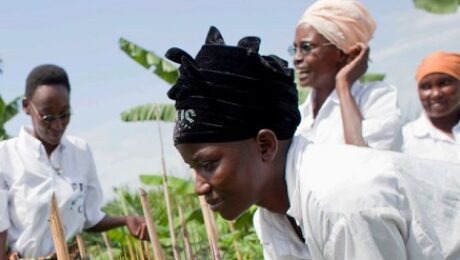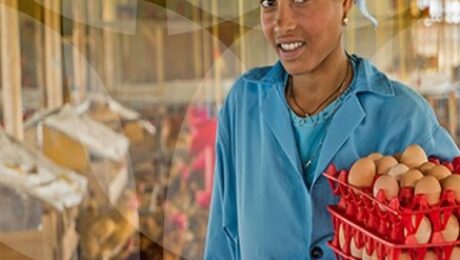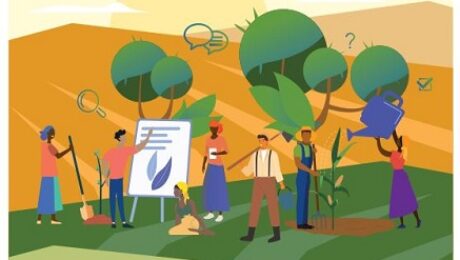Common Framework on Capacity Development for Agricultural Innovation Systems | CONCEPTUAL BACKGROUND
The Tropical Agriculture Platform (TAP) is a G20 initiative with strategic goal of contributing to the development of national capacities for agricultural innovation in the tropics and the objective of enhancing “Capacity Development” (CD) in “Agricultural Innovation Systems” (AIS). As stated in the TAP “Theory of Change”, the “TAP capitalizes on and adds value to on-going initiatives by fostering greater coherence of capacity development interventions in tropical agriculture, strengthening interaction for more harmonized action and greater mutual accountability, and avoiding duplication”.
One of the first tasks of TAP is therefore to facilitate the emergence of a common language and a shared understanding of the scope of the challenge. Most countries and Development Partners (DP) use their own terminology and a lot of time is lost in trying to understand the exact meaning of the words used. A few examples: Are “capacity development”, “capacity strengthening” and “capacity building” synonymous? What is meant by “Agricultural Innovation Systems” (AIS)? Is there a general agreement on the three “levels” usually identified in the field of capacity development” (CD), i.e. individual, organisational and institutional/system? How are defined the CD recipients/targets for each of these levels?
- Published in EXTENSION AND INNOVATION, GUIDE/TOOLS/MANUALS
Common Framework on Capacity Development for Agricultural Innovation Systems | GUIDANCE NOTE ON OPERATIONALIZATION
Agricultural innovation is critical for increasing agricultural productivity as well as for sustainability of agricultural systems. Innovation, however, cannot rely solely on spin-offs from foreign research. It requires endogenous capacities to generate, systematize, and adapt knowledge as well as to adopt and up-scale new practices.
An Agricultural Innovation System (AIS) is a network of actors or organizations, and individuals, together with supporting institutions and policies in the agricultural and related sectors, which bring existing or new products, processes, and forms of organization into social and economic use. Policies and institutions (formal and informal) shape the way that these actors interact, generate, share and use knowledge as well as jointly learn.
Capacity Development for Agricultural Innovation Systems (CD for AIS) enables joint learning and co-creation and new uses of knowledge for social change and enhances the interactions between actors. It is also about creating an enabling environment for such interaction, learning and innovation, based not only on conducive formal law and regulations, but also on informal values, attitudes and behaviours. It aims at changing people’s behaviour and developing of more sustainable practices that bring about societal transformation.
- Published in EXTENSION AND INNOVATION, GUIDE/TOOLS/MANUALS
Common Framework on Capacity Development for Agricultural Innovation Systems
Innovation in agriculture is a precondition for meeting the challenge of feeding the world’s growing population in the face of a changing climate and degrading natural resources. It is fundamental to achieving the Sustainable Development Goals of ending poverty and hunger, achieving food security, improving nutrition and promoting sustainable agriculture. Innovation also has a role to play in achieving gender equality, ensuring healthy lives for all and contributing to economic growth. Many countries are however not fully exploiting their innovation potential. In order to do so, they must strengthen the capacity of individuals and organizations, create an enabling environment and, crucially, reinforced or make more effective Agricultural Innovation Systems (AIS).
AIS, may be defined as complex networks of actors (individuals, organizations and enterprises), together with supporting institutions and policies that bring existing or new agricultural products, processes, and practices into social and economic use.
In 2012, the Agriculture Ministers of the G20 called for the creation of a Tropical Agriculture Platform (TAP) to promote the development of national capacities for agricultural innovation in the tropics, where almost all low-income countries are located. The aim of TAP is to enhance the overall performance of AIS, with particular focus on small- and medium-scale producers and enterprises in the agribusiness sector. TAP’s ultimate objective is to make agriculture more sustainable and improve livelihoods.
- Published in EXTENSION AND INNOVATION, GUIDE/TOOLS/MANUALS
Building Competence and Confidence in Agricultural Innovation | Stories of change
The manuals are intended as working documents. The project supported the development of the Common Framework on Capacity Development for Agricultural Innovation Systems of the Tropical Agriculture Platform, and tested it in eight pilot countries. One key finding was that the framework requires adaptation in each country situation, and as such the manuals are intended as general guides only .
- Published in EXTENSION AND INNOVATION
Developing capacities in agricultural innovation systems: scaling up the Tropical Agriculture Platform Framework”: the EU-funded TAP-AIS project
The TAP-AIS project is funded by the European Union (EU) and implemented by the Food and Agriculture Organization (FAO) of the United Nations.
The project evolves from the experience of the EU-funded Capacity Development for Agricultural Innovation Systems (CDAIS) project, which successfully tested and validated the TAP Common Framework on capacity development for agricultural innovation systems in eight countries (Angola, Bangladesh, Burkina Faso, Ethiopia, Guatemala, Honduras, Laos and Rwanda).
The TAP-AIS project is developed under the EU initiative “Development Smart Innovation through Research in Agriculture (DeSIRA): Towards climate-relevant Agricultural and Knowledge Innovation Systems”.
The objective of DeSIRA is to contribute to climate-relevant, productive and sustainable transformation of agriculture and food systems in low and middle-income countries.
DeSIRA supports research and innovation projects in Africa, Asia, Latin America and contributes primarily to the achievement of the following SDGs.
- Published in EXTENSION AND INNOVATION
Can an incremental approach be a better option in the dissemination of conservation agriculture?
Despite several efforts for its dissemination, adoption of conservation agriculture (CA) in the Middle East and North Africa (MENA) region is low – causing some to wonder if an incremental approach for adoption of its three components would prove more effective. In this paper, we apply the endogenous switching regression model to a nationally representative sample of 1901 wheat fields in Morocco to analyze the impacts of partial or full adoption of all three components of the CA system. We also employ an ordered probit model to identify the determinants of partial and full adoption of CA. Model results show that adoption of the complete CA system leads to 307 kg/ha (35 %) higher yields, US$99/ha (44 %) higher gross margins, and 23 kg/capita/year (38 %) more consumption of wheat relative to the conventional system. Our results also show that adoption of only two principles of the CA system leads to higher benefits in all the livelihood indicators listed above compared to adoption of only one or none of the principles. Likewise, adoption of only one principle is more beneficial than the conventional system. Along with biophysical and environmental benefits documented elsewhere, our results demonstrate that the CA system can provide large economic, social, and food security benefits both at individual household and national levels. Therefore, wider diffusion of the full CA system involving zero tillage (ZT), crop rotation, and crop residue retention has potential to sustainably improve the viability of agriculture in the drylands of Morocco and other similar countries in the MENA region. Given that the CA system is complex and knowledge-intensive, transition from the conventional system to CA requires the following: (1) flexibility to let farmers incrementally adopt one or more of the CA components, learn at their own pace, use some of the benefits, and improve it over time to exploit the full potential of the CA system with close follow-up and technical support from experts and extension specialists; and (2) sustained policy and institutional supports that provide incentives for farmers to adopt and for the private sector to be actively involved, especially in service provision.
- Published in EXTENSION AND INNOVATION
Advances in fruit breeding in Nepal
Nepal has spent about six decades on fruit development and research in different species. Fruit breeding particularly local and exotic germplasm collection started after 1950s and has gained momentum after the formation of commodity programme in 1972 AD. Major researches in the past were focused on indigenous and exotic genotype collection, evaluation, selection, propagation protocol standardization and adoptive trials. Some good ground works have already been done in major fruits such as apple, pear, plum, persimmon, kiwifruit, citrus, litchi, guava, pomegranate, walnut, papaya, banana and mango. The major public institutions involved in fruit breeding are Nepal Agricultural Research Council (NARC) following Agriculture and Forestry University. Some of the private nurseries like Everything Organic Nursery, Kavre and Technology Demonstration Centre of ICIMOD, Lalitpur were also involved in introduction and maintenance of indigenous and exotic fruit species. National Centre for Fruit Development, Kirtipur; Tropical Region Horticulture Centre, Nawalpur; Temperate Horticulture Farm, Satbanj, and Horticulture Farm, Marpha collected many local and exotic fruits and maintained at field gene bank. Horticulture Research Station, Rajikot has introduced 25 spur type apple cultivars and maintained in field gene bank. National Citrus Research Programme, Paripatle has introduced, collected and maintained 130 genotypes including exotic and indigenous landraces of citrus. Two varieties of acid lime ‘Sunkagati-1’ and ‘Sunkagati-2’ have been released and one variety ‘Terhathum Local’ has been registered. ‘Khoku Selection’ of mandarin orange has also been registered. Banana varieties ‘Malbhog’, ‘Willium Hybrid’ and ‘G9’ has been selected by participatory varietal selection and registered. To strengthen fruit breeding in the nation, NARC needs to be restructured with special focus on fruit researches. Establishment of national fruit commodity programs along with establishment of Tropical Fruit Research Station in Province 2 and Temperate Fruit Research Station in Province 5 at national level can streamline NARC’s fruit breeding researches.
- Published in EXTENSION AND INNOVATION
Good practices and innovations in risk management for agri-SME finance under COVID-19
This report compiles experiences and lessons shared in a Live Talks series on Risk Management for Agri-SME Finance between September and December 2020.
The series of three webinars was jointly organized by the Smallholder and Agri-SME Finance and Investment Network (SAFIN), the International Labour Organization’s (ILO) Social Finance Programme, and the Platform for Agricultural Risk Management (PARM). Co-hosted by SAFIN and FARM-D, the sessions presented case studies from agri-SMEs and financial service providers operating in various developing countries.
- Published in EXTENSION AND INNOVATION
Transformation as system innovation: insights from Nepal’s five decades of community forestry development
Studies of sustainability transitions and transformational change are common in energy and transport sectors. However, there is limited research on how these transformational change processes play out in the natural resources sector, particularly in developing economies. This paper seeks to address this gap, with a case study of the community forestry system in Nepal that has, over the last four decades, reversed Himalayan land degradation and contributed to community livelihoods. The case illustrates comprehensive changes in forest management practices and governance over four decades. Central to this was a ‘thinking movement’ of development agencies, activists and researchers that opened up learning spaces and engage conflicting stakeholders in action-oriented dialogues. While transformation can never be pre-engineered, this study suggests that investment in strengthening locally engaged research capability could be a key way of catalyzing sustainability transitions, both as a continuous process of evolution and transformative shifts during the crisis and political opportunity.
- Published in EXTENSION AND INNOVATION
Fall armyworm management: Farmer field school experiences in Africa
A technical brief on fall armyworm management from the lens of farmer field schools that outlines successes from previous projects in sub-Saharan Africa. Different control methods and traditional recipes for fall armyworm management are highlighted.
- Published in EXTENSION AND INNOVATION
